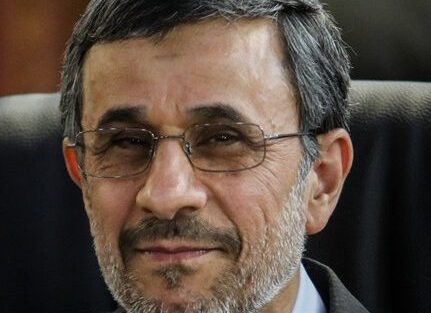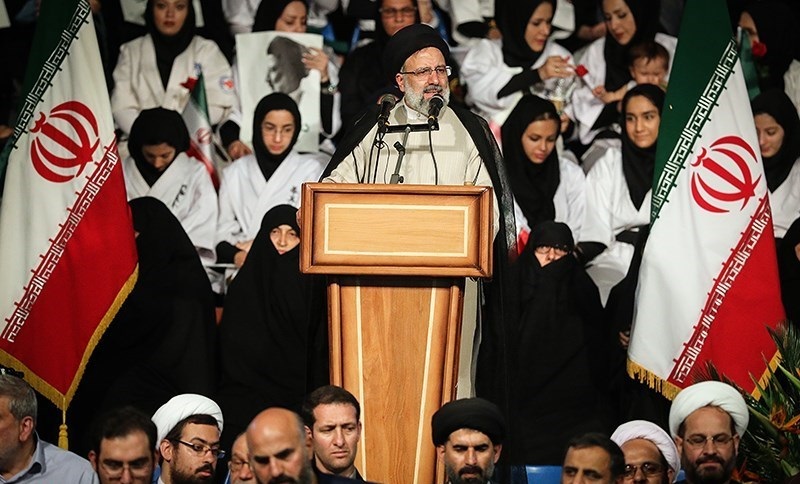Publications
INSS Insight No. 1482, June 6, 2021
The decision by Iran’s Guardian Council to disqualify the vast majority of the candidates in the coming presidential elections, including former speaker of the Majlis Ali Larijani, and Eshaq Jahangiri, First Vice-President under President Rouhani, in effect leaves the hardline cleric Ebrahim Raisi as the only candidate with real chances of winning the elections. This decision is another reflection of the regime’s efforts to strengthen the conservative hegemony in the political elite, especially in advance of the struggle over the succession of Iran’s leadership. The regime’s blatant intervention in the election process indicates that it is determined to maintain conservative control of power centers even at the cost of further undermining public confidence, and that it estimates that it is capable of suppressing any possible protest.
On May 25, 2021, following the screening of all the presidential candidates, Iran’s Guardian Council announced it had approved seven final candidates, out of the 592 candidates (including 40 women) who registered for the elections scheduled for June 18. That the vast majority of the candidates were disqualified came as no surprise. Since the beginning of the 1980s, only a few candidates have passed the screening process under the 12-member Guardian Council, half of whom are clerics appointed by Supreme Leader Ali Khamenei, and half of whom are jurists appointed by the Judiciary Chief and approved by the Majlis.
This time too, it was expected that the Council would disqualify any candidate it saw as someone who might undermine conservative hegemony in Iranian politics. Indeed, the Council disqualified, among others, former Iranian President Mahmoud Ahmadinejad, who dared to challenge Khamenei's leadership and completed his term as president isolated and politically bruised, and the senior reformist politician Mostafa Tajzadeh, who was jailed for several years after the riots in 2009 following his support for the protest movement led by Mir-Hossein Mousavi.
In contrast, the disqualification of the former Speaker of the Majlis, Ali Larijani, and Eshaq Jahangiri, First Vice-President under President Hassan Rouhani, astonished Iran's citizens and commentators. Larijani is considered one of the most senior politicians in Iran. Prior to his term as Speaker of the Majlis (2012-2020), he served as Secretary of the Supreme National Security Council, head of Iran's state broadcasting service, and Minister of Islamic Guidance. He is considered a conservative, but like other conservative politicians such as President Hassan Rouhani, he has recognized the need to adapt revolutionary ideology to contemporary conditions and current reality. During his term as Speaker of the Majlis, Larijani supported President Rouhani's policies, and he was considered someone who could be backed by some of the President's supporters and reformists, who saw him as the least objectionable candidate. Jahangiri, a politician from the moderate branch of the reformist camp, ran in the presidential elections in 2017 and even won praise following his appearances in the televised election debates, but dropped out before the end of the race in order to support President Rouhani. Although from the outset his chances of winning the elections seemed slim, he was considered a central candidate identified with the pragmatic/reformist camp, given the predicted disqualification of Tajzadeh and the decision by Foreign Minister Mohammad Javad Zarif not to run in the elections.
The final list of candidates includes the Head of Iran's Judiciary, Ebrahim Raisi; former Secretary of the Supreme National Security Council Saeed Jalili; former Commander of the Revolutionary Guard Corps and Secretary of the Expediency Discernment Council Mohsen Rezaee; outgoing Governor of the Central Bank of Iran Abdolnaser Hemmati; and Mohsen Mehralizadeh, one of the Vice Presidents under the former reformist president Mohammad Khatami. Other than the latter two, the rest of the candidates are identified with the conservative camp, and the list in effect leaves Raisi as the only candidate with real chances of winning the elections. Since the beginning of the 1980s, the hardline cleric, who was born in December 1960 in the city of Mashhad, has filled a series of positions in the judiciary, including his controversial position as Deputy Prosecutor of Tehran during the mass executions of political prisoners in 1988. In the Iranian presidential elections in May 2017, Raisi ran against President Rouhani, but was defeated after receiving 16 million votes, while Rouhani received 23 million votes. Against the backdrop of reports of the deteriorating health of the Supreme Leader, Raisi's name has come up as one of the leading candidates to succeed Khamenei. Since he was appointed by Khamenei as Judiciary Chief in March 2019, there have been increasing efforts by Raisi, seemingly with the backing of the Supreme Leader, to pursue changes in the judicial system, to strengthen his connections with citizens, and to repair his public image as a hardline cleric.
As expected, the Guardian Council's decision evoked strong criticism in the political system as well as public criticism. President Rouhani sent a public letter to the Supreme Leader requesting that he issue a decree enabling additional candidates to participate in the elections. The spokesperson of the reformist front, Azar Mansouri, announced that the Council's decision denies any possibility of active participation in the elections and that the reformists do not intend to support any candidate. Former president Ahmadinejad announced that he does not intend to vote in the elections. On social media too, there were critical responses and ridicule of the Council's decision. Despite this criticism, Iran's Leader announced on May 27 that he supports the Council's decision and called on citizens to participate in the elections.

The Guardian Council's decision is another reflection of the regime's efforts to strengthen conservative hegemony in the ruling political elite in Iran, and make it the exclusive political framework. While Larijani himself is considered a conservative, it seems that his support for Rouhani in recent years and the concern that like the previous president he might try to advance civil and social changes, such as expanding civil liberties, releasing political prisoners, and easing enforcement of the Islamic dress code, encouraged the regime to avoid any unnecessary risk. Even though elections in the Islamic Republic were never free and democratic, the regime sought to enable a certain degree of competition in order to maintain at least a semblance of popular representation. The series of victories in which the reformists won the elections for president (1997 and 2001), to the local councils (1999), and to the Majlis (2000) were seen by the conservative establishment as a serious threat to the values of the revolution and to the very stability of the regime. The conservatives began to neutralize the power of the reformists both through legal means, mainly via the Guardian Council, and through political and civil repression.
After the suppression of the reformists and their allies was completed, including of former President Akbar Hashemi Rafsanjani, the regime turned its efforts against its rivals on the political right, the supporters of former President Mahmoud Ahmadinejad. The regime suppressed any alternative center of political power and in effect left the political system in the complete control of the conservative camp. In recent election campaigns for the presidency and the Majlis, the main struggle no longer took place between the Islamic left and right or between reformists and conservatives, but rather between different factions within the conservative camp: more hardline and more pragmatic. In the parliamentary elections in 2020, the Guardian Council disqualified not only clear reformist candidates but also the majority of candidates identified with the supporters of President Rouhani. While the removal of alternative ideas and factions from the political system has helped the conservative religious establishment maintain its standing in the political leadership in the short term, in its efforts to suppress any other power center, it has lost much of the basis of its legitimacy, especially against the backdrop of its ongoing failure to address the public's demands and its grievances.
Given the regime's blatant intervention in the elections, renewed popular protest cannot be ruled out. In the summer of 2009, claims by the reformist opposition that the election results were rigged led to the most serious wave of riots since the revolution. However, the reality today is very different from that of twelve years ago. The 2009 election campaign aroused real hope for change, mainly on the part of supporters of civil liberties among young people from the middle class. But in recent years hopes for change have been replaced with a sense of despair, increasing political apathy, and a loss of public confidence in state institutions. The calls heard during the waves of popular protest since the end of 2018 in the form of "conservatives, reformists, the story is over for all of you!" indicate the loss of confidence in both of the main political camps in Iran. In this reality, many citizens believe that there is no longer any point participating in elections, as the influence is in any case limited. In the parliamentary elections in February 2020 the voter turnout was only 42 percent – the lowest since the Islamic Revolution. Even before the final list of candidates for the presidential elections was announced, public opinion polls conducted in recent weeks in Iran predicted a low voter turnout in the elections. In a poll by the Islamic Republic of Iran Broadcasting, 51 percent of respondents said that they do not intend to vote. In comparison, voter turnout was 73.3 percent in 2017, about 73 percent in 2013, and 85.2 percent in 2009.
Furthermore, it is evident that at least portions of the Iranian public are willing to make do – certainly in the short term – with improving the economic situation. For example, the waves of protest in recent years were mainly of an economic nature, and it seems that they were directed at achieving limited economic aims. The exacerbation of the economic crisis forces citizens to focus on the daily struggle for survival, limits their engagement in a struggle for political and civil liberties, and further increases the dependence of workers, many of whom are employed in the public sector, on the government. The COVID-19 pandemic, which has not yet subsided, also serves as a restraining factor in light of concern about taking to the streets. Furthermore, it seems that despite the difficulties, the Iranian regime, which learned the lessons of the 2009 riots well, continues to retain the ability to use significant and effective means of suppression against protest demonstrations, and enjoys significant support among the security and law enforcement forces, chief among them the Revolutionary Guards.
Ultimately, the regime's conduct in the election process indicates that it estimates the inherent risk in its intervention is low, relative to the drive to maintain conservative dominance in the institutions of government. While Raisi, who if elected would begin his term as president in August 2021, was in any case considered a frontrunner, it seems that the regime was not willing to take the risk of even the slim possibility of his defeat in the elections. The assessment that the Khamenei era is nearing its end strengthens the efforts to prepare the ground for succession and to ensure that control of the various power centers, among them those elected by the public, remains in the hands of the Supreme Leader’s loyalists, including at the cost of further undermining public confidence and the principle of popular representation.



